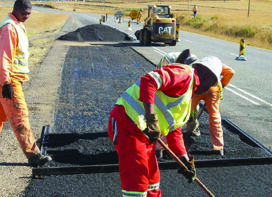

In recent years, the integration of artificial intelligence (AI) technologies in road management and maintenance has marked a significant leap forward in optimizing transportation infrastructure. These advancements have introduced innovative solutions to enhance road safety, improve traffic flow, and reduce maintenance costs. Amit Kar, Head Technology & Solutions – Global Services Business, Sterlite Technologies Limited throws light on the future of predictive technologies used for road maintenance that holds immense promise, shaping the way infrastructure is managed and optimized globally and specifically within India.
With advancements in artificial intelligence, data analytics, Internet of Things (IoT), and remote sensing technologies, road maintenance is undergoing a transformative evolution. These predictive technologies not only enable proactive maintenance strategies but also enhance safety, efficiency, and sustainability in managing road networks. By employing next-generation of distributed sensors and vision-based artificial intelligence (AI) methodologies to evaluate, classify and localize possible concerns on the roads, using the measured data, we can leverage the advancements made in computer vision and data mining techniques to deliver robust road condition monitoring systems.
Challenges
Roads & highways need to be maintained for safety and reliability of the traffic that uses them. They represent important infrastructure for countries and are often managed by local or national government bodies. Due to their scale and differing terrains, they pass through, it can be a huge challenge to inspect them for safety and condition monitoring. The most common fault found on roads and highways tend to be potholes – depressions in the road surface or on the pavement. Potholes are bad for roads because they can damage vehicles and make the road less safe to drive on.
When a pothole forms, it creates a depression in the road surface. This depression can cause vehicles to lose control and in the worst cases, result in accidents. Over time, potholes weaken the overall structure of the road, especially in adverse weather, and can lead to severe damage and costly repairs. Additionally, poorly maintained roads are also a major cause of traffic related injuries and deaths.
In view of these challenges, prompt mechanisms are desirable to estimate and attempt repairs on sections of damaged highways and roads before calamity strikes. Therefore, by employing viable road condition monitoring systems, the road safety and transportation efficiency of a city can be enhanced. Timely detection and accurate assessment of road conditions is essential for the provision of safe and sustainable transportation services, and effective infrastructure management.
Given here are some of the solutions being employed to address road maintenance.

Image Based
Detection of potholes and other faults on roads using imaging and computer vision involves the use of cameras, sensors, and advanced algorithms to identify and analyse the road surface for defects. The general working of such systems is described here.
- High-resolution cameras mounted on vehicles or stationary points capture images of road surfaces. The cameras are generally RGB-based imagery sensors that can provide a high-quality video/static feed for the algorithms to work on.
- The feed from the cameras is then provided as input to computer vision algorithms, that analyse them to detect and classify potholes, cracks, and other depressions based on their size, shape, and severity.
- With the help of GPS and other tagging mechanisms, the faults are localised and shared with public infrastructure maintenance agencies for record keeping.
With the tremendous increase in usage of smartphones, citizens of a country are now able to report potholes and faults to the relevant authorities. Mobile Applications equipped with image recognition and GPS technology allow users to report potholes and road defects in real time. These reports contribute to crowdsourced data for maintenance prioritization.
Further, local agencies have also adapted this method to perform field surveys with the help of drones mounted with the cameras. This allows them to survey large areas of the road network to find undulations.
The image-based systems have shown efficiency in identifying potholes and depressions, enabling timely repairs to prevent accidents and infrastructure damage. They are one of the favoured and most widely spread mechanisms in use.
3D data Modelling
Imaging-based solutions can transcend into three dimensions with the integration of depth estimation sensors. Utilizing measurement systems based on LiDAR scanning has become prevalent, generating dense 3D point cloud data. This approach abstracts valuable information from the 3D point clouds derived from scans of relevant objects and scenes. Such techniques offer direct applicability to monitoring and maintaining road networks, whether through vehicle-mounted mobile mapping systems or drone-based platforms. The highlight of this method is the ability to compute the physical properties of pavement depressions, such as the length, width and depth.
Companies like Vercator exemplify the utilization of 3D point cloud data alongside object detection algorithms to classify potholes along highway stretches. A key advantage of this method lies in its ability to predict and pinpoint potential road faults by leveraging additional data. The depth readings of bitumen across different sections of the road provide insights into potential stress points, indicating areas prone to developing depressions or potholes. This geospatial analysis enhances proactive road maintenance strategies, enabling timely interventions to ensure road safety and infrastructure longevity.
Acoustics
This method makes use of a variety of sensors such as the Inertial Measurement Unit (IMU) sensor, capable of measuring acceleration, orientation, angular rates, and piezo-electric sensors that can produce current proportional to the force applied on them. The sensors are generally mounted on to the body of a vehicle and the vibrations caused due to the undulations on the road, as the vehicle moves along, is captured. A variety of machine learning models are then used to analyse this data and help detect damages on the road surface.
Detection of Anomalies: Acoustic sensors can detect subtle changes in the sound and vibration patterns of road surfaces, such as the presence of cracks, potholes, or structural weaknesses. These anomalies can be early indicators of potential issues.
Continuous Monitoring: Acoustic-based systems provide continuous monitoring of road conditions, allowing for real-time detection of problems. This proactive approach enables maintenance teams to address issues before they escalate and lead to significant damage.
Data Analysis: The data collected from acoustic sensors are analyzed using advanced algorithms and machine learning techniques. These algorithms can identify patterns, trends, and anomalies in the acoustic signals, providing insights into the overall condition of the road network.
Advance Driver Assistance System (ADAS)
ADAS (Advanced Driver Assistance Systems) while primarily focused on driver safety, offers valuable data for proactive road maintenance. ADAS based road maintenance systems utilize a combination of sensors, cameras, and intelligent algorithms to enhance road safety and facilitate proactive maintenance.
Sensor Integration: ADAS systems incorporate various sensors such as LiDAR (Light Detection and Ranging), radar, cameras, and GPS to gather real-time data about the road environment, traffic conditions, and vehicle dynamics.
Data Fusion: The data from different sensors are fused together using advanced data fusion algorithms. This process integrates information about road conditions, weather, obstacles, and nearby vehicles to provide a comprehensive understanding of the driving environment.
Object Detection and Recognition: ADAS systems use computer vision algorithms to detect and recognize objects on the road, including vehicles, pedestrians, cyclists, road signs, and lane markings. This helps in assessing potential hazards and ensuring safe driving conditions.
Driver Alerts and Assistance: ADAS systems provide real-time alerts to drivers about potential hazards, lane departures, collision risks, and speed limits. Some systems also offer autonomous or semi-autonomous driving capabilities, assisting drivers in navigating challenging road conditions and avoiding accidents.

Self-Healing Roads with AI Integration:
While self-healing roads themselves are not AI-driven, the technology has the potential to benefit from AI integration in the future. Here is a possible scenario:
AI-powered Monitoring and Predictive Maintenance: Imagine a self-healing road embedded with sensors that can detect the formation of cracks and communicate this data to an AI system. The AI could then analyze the severity of the crack, predict potential future issues, and even trigger the release of healing agents in a targeted manner. This would optimize resource usage and extend the lifespan of the self-healing materials.
This integration of AI with self-healing roads presents a glimpse into a future where road maintenance becomes even more intelligent and proactive.
Benefits
The benefits of proactive maintenance for road infrastructure are vividly demonstrated through several impactful examples where real communities have leveraged advanced systems:
- RoadBotics by Michelin: This company harnesses an image-based road standard detection system to evaluate sections of highways and roads efficiently. In a pilot project conducted in Savannah, Georgia, a comprehensive assessment of a 700-mile road network was completed in just 3 months, a stark comparison to the 3 years it would have taken manually. This initiative not only saved the city over $80,000 in revenue but also facilitated the scheduling of pre-emptive maintenance activities, enhancing overall road durability and safety.
- iRASTE Initiative: It is a unique partnership of industry, academia and government and is driven by Nagpur Municipal Corporation, CSIR-CRRI, Mahindra & Mahindra, INAI, IIIT-Hyderabad and Intel. iRASTE utilizes an ADAS-based system to revolutionize Road Safety Engineering. The predictive insights generated by this system can proactively prevent accidents, leading to a projected 50% decline in road accidents in Nagpur city and significant reductions in blackspots across the road network. Its deployment across Telangana and Maharashtra’s Nagpur city, leveraging public transport as the data collection unit, underscores its scalability and impact on enhancing road safety measures.
- Vaisala’s Road Asset Management: This system integrates geospatial videos, driver-made annotations, and computer vision analysis to support comprehensive road maintenance and management strategies. Notably, in Suffolk, southern England, this system facilitated the survey of the entire motorable road network within just 6 months, providing detailed and granular road data. This enhanced data collection approach enables government agencies to determine rates of road deterioration more effectively, leading to improved planning and cost-effective maintenance practices.
These examples highlight the pivotal role of advanced systems in expediting road network mapping, simplifying data collection processes, and empowering local agencies with critical road condition insights. By optimizing maintenance activities and boosting network efficiency, these systems contribute significantly to minimizing accidents and ensuring safer, more sustainable road infrastructure.

Going Ahead
As we delve into the future of predictive technologies for road maintenance, both from a global and Indian perspective, and explore the advancements and challenges of AI in road management and maintenance, it becomes clear that the fusion of cutting-edge technologies with traditional infrastructure holds immense potential. The integration of AI-driven predictive algorithms, IoT sensors, and data analytics tools offers a transformative pathway towards smarter, more efficient road networks. This global shift demands collaboration: governments, industries, and researchers must join forces to unlock this potential. By embracing AI as a partner, we can pave the way for smarter, greener, and more prosperous transportation for all.
 TrafficInfraTech Magazine Linking People Places & Progress
TrafficInfraTech Magazine Linking People Places & Progress


